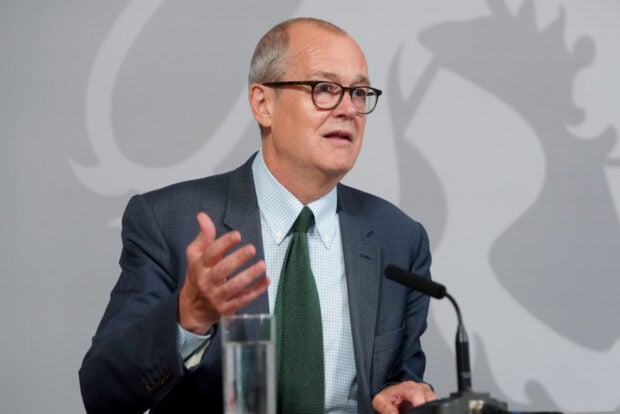UK Spending Review will upgrade legacy technology in government, says minister

The UK’s minister of state for science, research and innovation has confirmed that the government will use the forthcoming Spending Review to address ageing IT systems and make investments in cybersecurity, cloud computing and artificial intelligence.
Asked by Lord Taylor of Warwick about the steps the government is taking to encourage the public sector to adopt artificial intelligence and ensure sufficient funding, Patrick Vallance, the UK’s chief scientific adviser during the Covid-19 pandemic and now minister for science, highlighted the government’s recent announcements on IT modernisation.
“As set out in the AI Opportunities Action Plan and the blueprint for modern digital government, both of which were published in January, the UK government has a vision for supporting the UK’s leading position in the global AI sector through the safe, effective, efficient and ethical adoption of AI in the UK’s public sector,” said Vallance in a written answer.
“The UK government is in the process of a Spending Review which will be used to tackle the state of historic legacy IT, invest in cybersecurity, cloud-based computing, and the technologies that harness the benefits of AI for the public sector. The government has a clear focus on taking advantage of new technologies such as AI to improve public sector productivity and deliver a better user experience for citizens.”
The Spending Review 2025 is taking place in two phases. At the Autumn Budget in October 2024, chancellor Rachel Reeves set out the outcome of phase 1 of the Spending Review, which confirmed departmental budgets for 2024-25 and set budgets for 2025-26. Phase 2 will be published in late spring of 2025 and will prioritise delivering the government’s missions. As part of this, departments will be expected to “make better use of technology and seek to reform public services”.
Vallance was appointed to his ministerial role on 5 July 2024 as the new Labour government took power. The position sits within the Department for Science, Innovation and Technology, which now houses the Government Digital Service (GDS) – recently designated as the ‘digital centre of government’.
Global Government Forum’s Innovation 2025 conference takes place on 25 & 26 March in London, and brings together government leaders from across the globe for discussions on transformation in government. Find out more and register here.
GOV.UK Pay to embed open banking
As one example of how the UK government is working to transform technology, GDS has taken a step towards introducing open banking payment technology into its GOV.UK Pay payments platform.
GOV.UK Pay is a central service available to all public sector bodies across the UK for the receipt of online payments. Currently used by 1,228 services across 440 organisations, it has processed about 100 million transactions with a combined value of £6.4bn ($8bn) since 2016.
A new ‘payment provider for GOV.UK Pay’ tender notice was issued last week, stating that GDS “is seeking a payment service provider to underpin the GOV.UK Pay platform, specifically for processing credit- and debit-card payments and pay by bank (open banking) payments made by end users to services operated by local government, police, the armed forces and some other public sector organisations”.
The contract has a value of £49.2m ($62m) and would run for an initial three-year period from July 2025, with two 12-month extension options. The closing date for applications is 19 March.
Open banking allows customers to securely share their financial data with third parties via Open Application Programming Interfaces (APIs). It is being encouraged by governments worldwide as a means of boosting the speed and accuracy of payments, as well as innovation and competition in financial services.
Read more about the new GOV.UK Pay tender and the trend of open banking in government on the site of our sister publication, Global Government Fintech: UK Gov Digital Service tenders contract to embed open banking in Gov.UK Pay.
Overhauling government technology
The move to upgrade GOV.UK Pay comes after science secretary Peter Kyle launched a new digital strategy last month and set out the government’s focus on “overhauling how the public sector uses technology” in order to “slash the time people waste dealing with annoying processes so they can focus on what matters to them”.
He outlined what the government called a ‘blueprint for modern digital government’ at the GDS headquarters in Whitechapel, London, and announced a range of products that aim to enhance public interaction with government and improve efficiency for civil servants.
These included a new GOV.UK wallet, which would hold all an individual’s government documents and entitlements. The wallet will be stored on users’ phones, as part of a new GOV.UK app set to launch this summer. The wallet will initially store a Veteran Card for those eligible and a digital driver’s licence later this year, and will expand to include every other government-issued credential by the end of 2027. Usage will be optional and traditional physical documents will remain available.
Read more: Catch up with all our coverage of the UK’s blueprint for a modern digital government




















